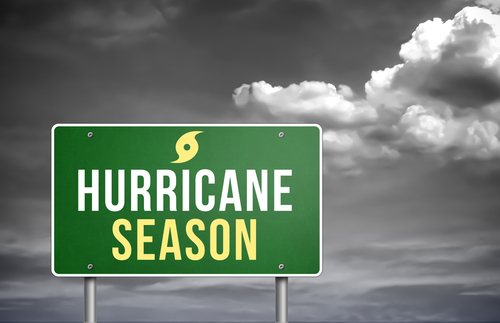The dreaded hurricane season is once more upon Floridians, and it is a long one folks. From June 1st until the end of November, the media will be bombarding the populace with what one needs to do to be ready should a hurricane strike Florida. The topic will be the tropics and every news program will carry a segment on what the tropics and the coast of Africa are throwing our way.
There no doubt will be media over saturation of “hurricane preparedness”, which sometimes seems to have a counterproductive effect on the residents of Florida, where many take for granted the suggestions to start preparing early and have a hurricane plan in place.
Though the media and news will begin to regularly have updates on the events happening in the tropics and what items to have handy and in stock (batteries, water, canned food, gasoline, medicines, pet food, have an emergency kit, etc.) in case of a hurricane, there is not much attention given about how hurricane preparedness should start with looking at your homeowner’s insurance policy.
Everyone living in paradise should have a hurricane plan in place to include a thorough review of the insurance policy. It is recommended that, every year, prior to the start of hurricane season, the insurance policy be thoroughly reviewed, not only the type of coverage it provides, but also for the limits of coverage afforded. Just like making an appointment to see the doctor for an annual check-up, every year, prior to the start of hurricane season, it is always a good time to make an appointment and sit with your agent to review the policy.
Circumstances throughout the year may change requiring that either the coverages, limits or type of policy be adjusted (i.e., property is now a rental property and not the primary residence, because usually, rental properties require a different type of policy to be underwritten with different coverages and limits, etc.). When circumstances change and the insurance policy is not adjusted, should a disaster strike, you may find yourself under insured or even worse, not covered at all for the damages. Make sure to maintain a complete copy of the policy, including any endorsements.
Your agent can assist you in obtaining a copy or you can obtain it by simply calling your insurance company and requesting it.
After reviewing your policy and making the necessary changes, if any, it is always advisable to take pictures of your property, including your personal property. Pictures go a long way to help prove that the property did not have any prior damage and that you owned the property in question. Keep a copy of the policy and the pictures in a safe place that is moisture proof,
in the event that your home becomes damaged by wind and rain. If you have receipts for the property, especially electronics, keep them with the policy and the pictures for easy reference and quick access should it be necessary. Jewelry is typically not covered 100 percent. Policies usually have a monetary limit in case of theft, loss, or damage. It is always a good idea to take stock of your jewelry and review your coverage during the annual policy check-up. You may find that a special rider is needed to insure that Rolex to its full replacement value.
The phrase, “location, location, location” is often used in real estate. Well, for hurricanes, or any storm for that matter, “preparation, preparation, preparation” is key. Having a preparation plan and seeing it through are keys to help minimize damage and the stress that comes with living through a storm. Take the time to secure your property. Cover all openings, windows and sliding glass doors with storm shutters or plywood cut to fit.
Don’t forget about the garage door. If a garage door is compromised it could potentially be devastating to your home’s structure. If necessary, install straps or additional clips to secure your roof and reduce roof damage. Don’t forget to bring the patio furniture inside, and clear all objects that could be blown around or away. Cutting and trimming down trees is also a good idea to make them more wind resistant. Don’t wait to prepare, because when a hurricane warning is issued, it may be too late.
Once a hurricane hits, what’s next? First and foremost, the personal safety of all friends and family is tantamount. Once everyone is accounted for and safe, photograph the damage to your property, and begin mitigation efforts as soon as possible. Insurance policies require that reasonable steps be taken to prevent damage from getting worse.
For example, if the roof was damaged, put a tarp on it. Failure to mitigate could potentially compromise coverage for additional damages after the storm. Lastly, if your property is damaged from the storm, call your insurance agent or insurer directly and make a claim as soon as it is possible. Prompt notice of the loss is often required, as well as making the property available for inspection.
For other tips on what to do to prepare for a hurricane, visit www.ready.gov.





